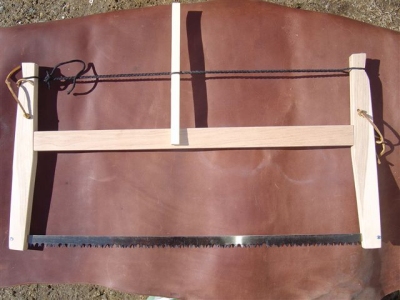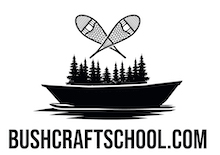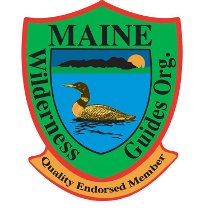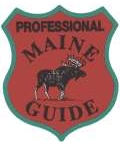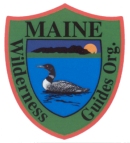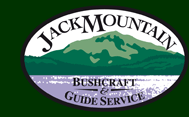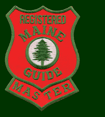Photo: 24″ Packsaw from Pole & Paddle Canoe
Note: This article was first posted at BushcraftSchool.com, our private online network. We are transitioning to posting all of our media for our community there, with a few things posted here. If you like this sort of thing, consider joining us there. It’s free to join.
We’re adding a folding bucksaw to the suggested gear list for 2023 Winter Woodsman course, and to the required gear list for the 2023 Boreal Snowshoe Expedition. When living on the trail in winter, being able to cut firewood into lengths that fit your woodstove is crucial. While you can accomplish this with an axe, it is much simpler, and there is much less waste (ie. wood chips) with a saw.
The problem with bow saws (or buck saws, or a few other names referring to a saw with a rigid frame that holds the blade under tension) is that they are pain to transport if the frames don’t break down. Thankfully there are several styles and makes of folding bucksaws available these days, most of which use standard, hardware store saw blades that you can get anywhere. We tend not to use the saws with rigid blades that fold in half, such as Silky saws, due to expense; they are expensive and so are the replacement blades.
Generally saw blades of the style we’re interested in come in four common sizes: 21″, 24″, 30″ and 36″. The 21″ is great for crafting or short trips, but with such a short stroke it is a lot of work to put up a big pile of firewood. The 24″ is a great size for crafting or firewood, as is the 30″. The 36″ is great for firewood, but is a challenge to transport, and as such is great for a fixed camp but awkward on the trail. We recommend a saw either 24″ or 30″ in length.
As saws get older, the teeth get duller, then they don’t cut as well. Also, when care is not taken to avoid wobbling the saw while using it, the blades bend. Once the blade is bent, it will never cut straight again. This is why we don’t like lending saws; because it only takes a few moments for someone to ruin a saw blade by bending it. At that point, the blade must be replaced for it to be an efficient tool again.
There are two types of folding bucksaws that we recommend: The Pole And Paddle wooden-framed Bucksaw and the Bob Dustrude-style metal-framed saw (currently available as the TUFF camp saw from Spring Creek Manufacturing). The point of the frame is to provide tension to keep the blade straight. The tension should be such that you can twang the saw blade and play it like a guitar; if there is no music, there is not enough tension on the blade and it is more likely to buckle and bend.
Both of these styles fold up to protect the blade when not in use, and to make them easy to travel with. Both of these saws will only cut as well as their blade is sharp. Both of them can be assembled and disassembled in a few minutes.
I have owned and used both of these types of saws for many years. Both are amazing pieces of kit and worth having. The biggest difference I notice after years of use is in the materials. When you are sawing up a pile of wood, you get hot. Often you’ll lose a layer or two before you have sawed a few turns of wood into stove-length fuel. With the metal-framed Dustrude-style saw, you can’t shed your gloves when you start to overheat because you can’t let your warm skin touch the cold metal frame. With the wood-framed Pole And Paddle Saw, you can take your gloves off and hold the wooden frame in your bare hand. This isn’t a huge difference, but on those warmer days I use the Pole And Paddle Saw for this reason.
As a baseline skill, if you are going to spend any time in remote places you should be able to construct a saw frame that will adequately tension the blade using only your knife. Your homemade saw should be able to stand up to the rigors of hard use. We use the folding saws mentioned here in order to save time on the winter trail, not because we can’t make our own from scratch. And if they ever break, we are secure in the knowledge that we can make one from scratch, although it will take a bit longer than assembling one of these.
Also, you should always carry a few extra saw blades as they have no appreciable weight and are easy to put onto a sled or toboggan. And take great pains to not bend the blades.
We will have a group saw available on the Winter Woodsman course. On the Boreal Snowshoe Expedition, as it is professional training for future guides, we expect you to bring your own saw and maintain it by treating it with care. Take care of your tools and they will take care of you.
Link: https://www.springcreek.com/product/paddle-sports/camping/tuff-camp-saw/
Link: http://poleandpaddle.com/tools/folding_bucksaws
Saw Blades are available from Ben’s Backwoods, and probably at your local hardware store. Link: https://www.bensbackwoods.com/saws/
These are not affiliate links. We have no economic interests in recommending these products. While I do own these products, I was not given them to test or promote; I bought them.
